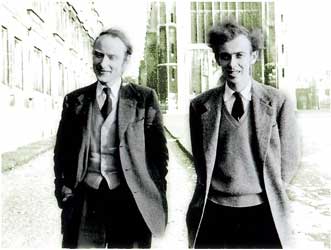 Senator Tom Coburn has been attacking what he considers spurious science funded by the National Science Foundation. In a scathing recent report, he skewered grants that supported a robot that folds laundry (an activity recently proven to lead to Nobel Prizes) and taught shrimp how to run on a treadmill. Coburn, who holds a BS in accounting, an MD, and a PhD in BS, knows his science. He told ABC News, “What it says to me is, they have too much money if they’re going to spend money on things like that.”
Senator Tom Coburn has been attacking what he considers spurious science funded by the National Science Foundation. In a scathing recent report, he skewered grants that supported a robot that folds laundry (an activity recently proven to lead to Nobel Prizes) and taught shrimp how to run on a treadmill. Coburn, who holds a BS in accounting, an MD, and a PhD in BS, knows his science. He told ABC News, “What it says to me is, they have too much money if they’re going to spend money on things like that.”
What else “like that” has grant money been spent on over the years? Funny you should ask. We here at genotopia have compiled, as a public service, a list of insanely useless research that, as it turned out, led to Nobel Prizes. See if you can identify them. Get one point each for correctly identifying the scientist, year of their Nobel, and the scientific topic. Play along and win! Post your score in the comments section to be sure you can claim your prize!
Score:
1-6: Consider yourself an honorary Republican Senator.
7-14: You will receive a copy of Coburn’s memoir, My story and I’m sticking to it, forthcoming from Anal Richards University Press.
15-20: You will be entered in a drawing for a coveted slot as chair of an NIH study section!
21-24: Congratulations! You’ve just been elected Secretary of Labor!
a) For decades, the Carnegie Institution of Washington gave money to an eccentric, prickly loner who eventually stopped publishing altogether, and whose main contribution, if you can call it that, was a study of colored spots in corn!
b) In the early 1950s, the March of Dimes funded a bright but aimless postdoc and a superannuated and feckless British graduate student working in England, paying them to diddle around with Tinker Toys!
c) In the late 1950s, the Jane Coffin Childs Fund supported research on sex in bacteria! This same researcher went on to study life on Mars—the only science which has no subject matter!
d) Countless thousands in federal funding went to a foreign researcher who studied what happens when you poke a sea slug!
e) For more than 40 years, this Caltech scientist was supported in his research into how to create mutant fruit flies!
f) This kooky researcher was supported in what he called the “wonderful experience” of studying brown fat in Syrian golden hamsters! He later proposed the wacky hypothesis of an infectious disease that isn’t caused by any organism!
g) This so-called scientist spent time creating mutants of beer yeast that die when it gets warm! Just keep it in the fridge—it tastes better anyway!
h) This person spent years on the federal dole trying to figure out how many different kinds of garbage a rat can smell!
Answers: a) Barbara McClintock, 1983, transposable genetic elements; b) James Watson and Francis Crick, 1962, DNA double helix; c) Joshua Lederberg, 1958, bacterial conjugation; d) Eric Kandel, 2000, signal transduction in Aplysia; e) Edward B. Lewis, 1995, genetic control of early embryonic development; f) Stanley Prusiner, 1997, prions; g) Leland Hartwell, 2001, cell cycle regulation; h) Linda Buck, 2004, odorant receptors and the organization of the olfactory system.
You must be logged in to post a comment.